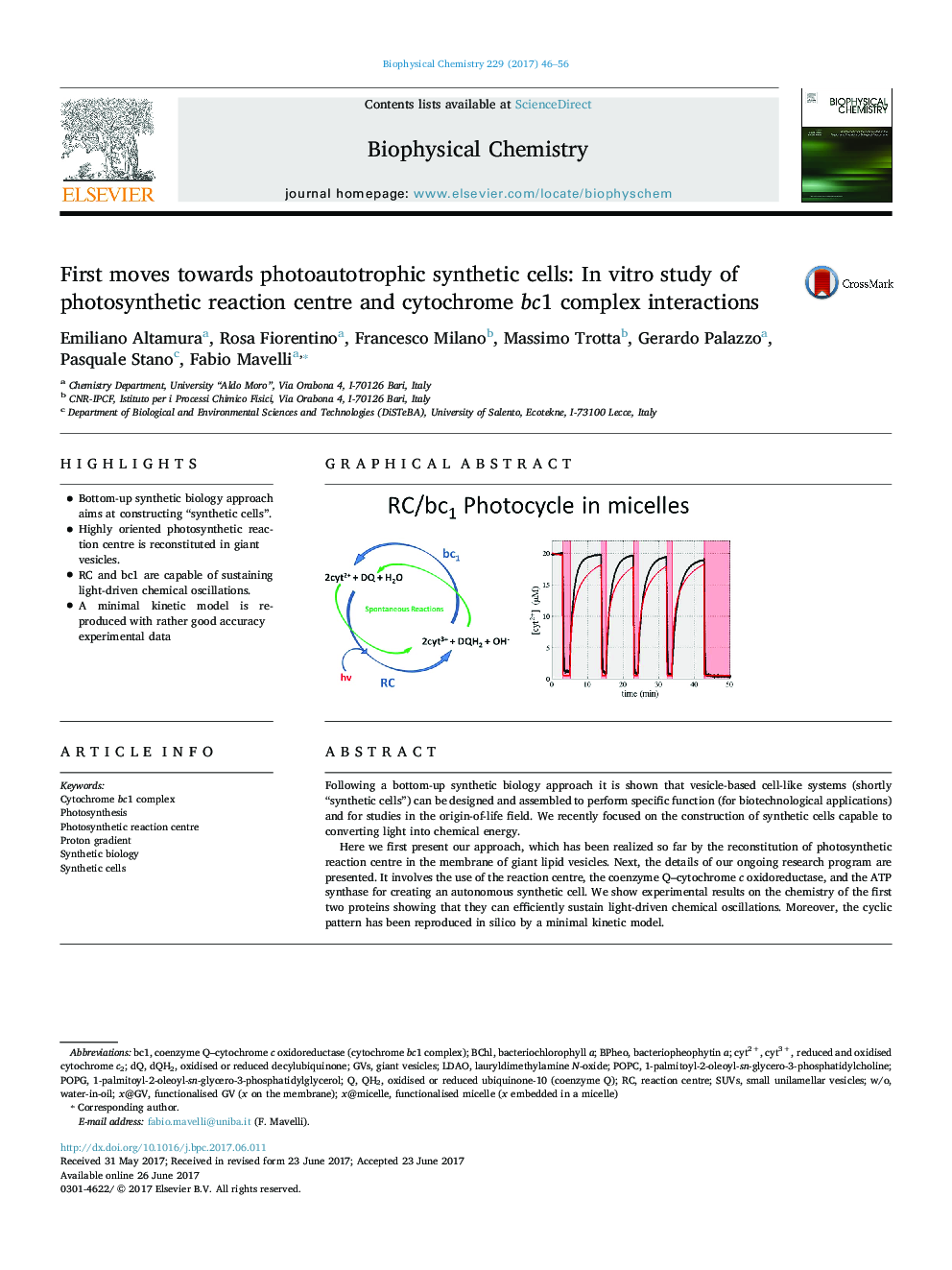| Article ID | Journal | Published Year | Pages | File Type |
|---|---|---|---|---|
| 5370607 | Biophysical Chemistry | 2017 | 11 Pages |
â¢Bottom-up synthetic biology approach aims at constructing “synthetic cells”.â¢Highly oriented photosynthetic reaction centre is reconstituted in giant vesicles.â¢RC and bc1 are capable of sustaining light-driven chemical oscillations.â¢A minimal kinetic model is reproduced with rather good accuracy experimental data
Following a bottom-up synthetic biology approach it is shown that vesicle-based cell-like systems (shortly “synthetic cells”) can be designed and assembled to perform specific function (for biotechnological applications) and for studies in the origin-of-life field. We recently focused on the construction of synthetic cells capable to converting light into chemical energy.Here we first present our approach, which has been realized so far by the reconstitution of photosynthetic reaction centre in the membrane of giant lipid vesicles. Next, the details of our ongoing research program are presented. It involves the use of the reaction centre, the coenzyme Q-cytochrome c oxidoreductase, and the ATP synthase for creating an autonomous synthetic cell. We show experimental results on the chemistry of the first two proteins showing that they can efficiently sustain light-driven chemical oscillations. Moreover, the cyclic pattern has been reproduced in silico by a minimal kinetic model.
Graphical abstractDownload high-res image (110KB)Download full-size image
